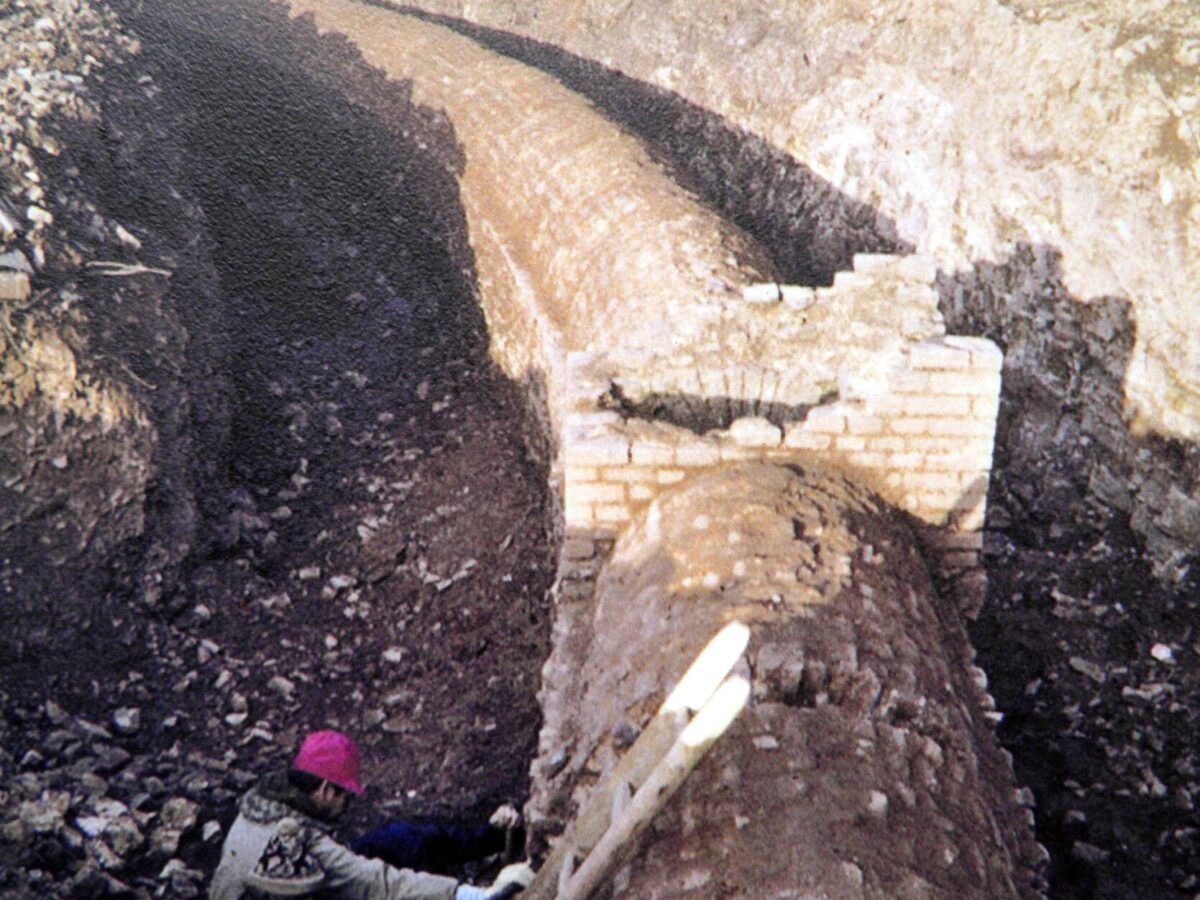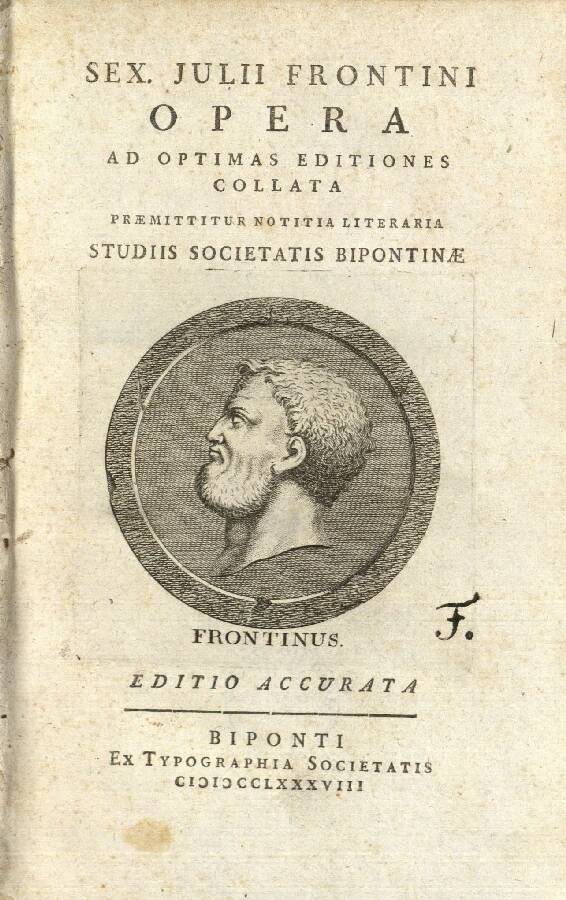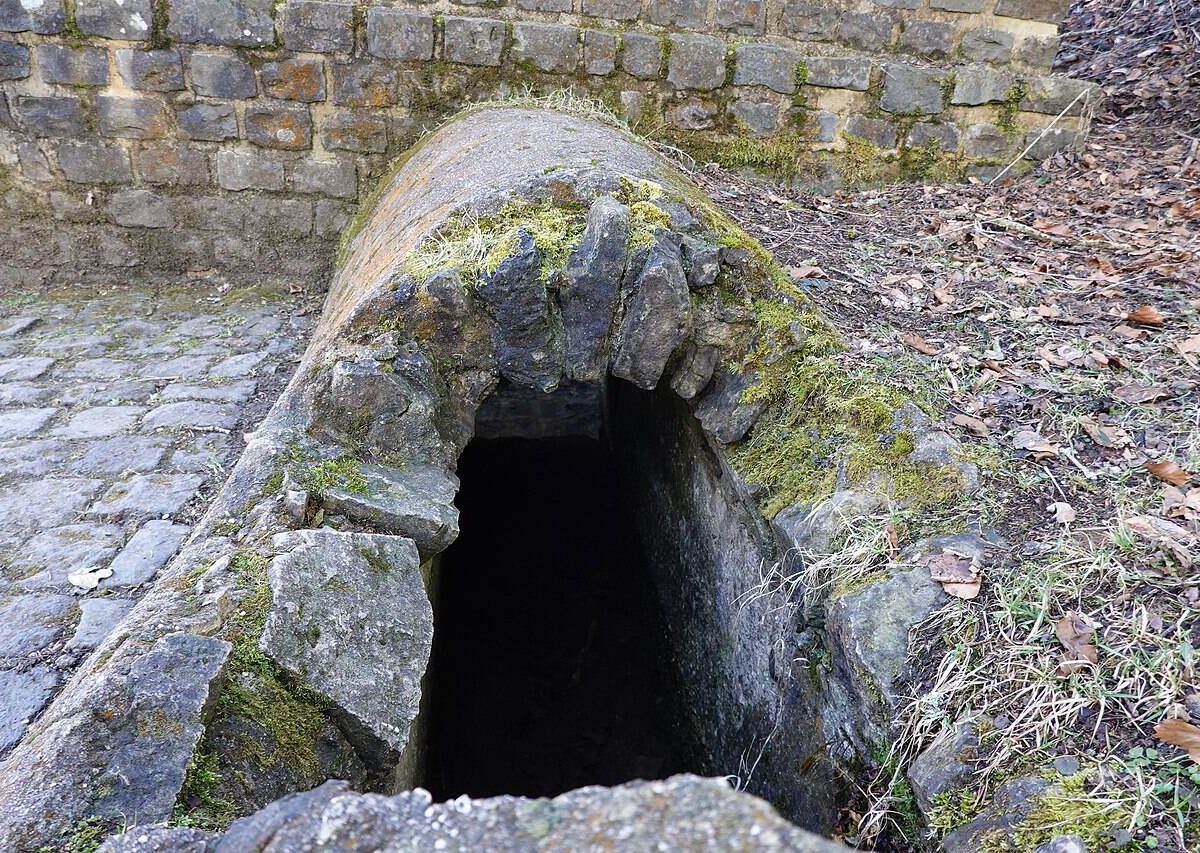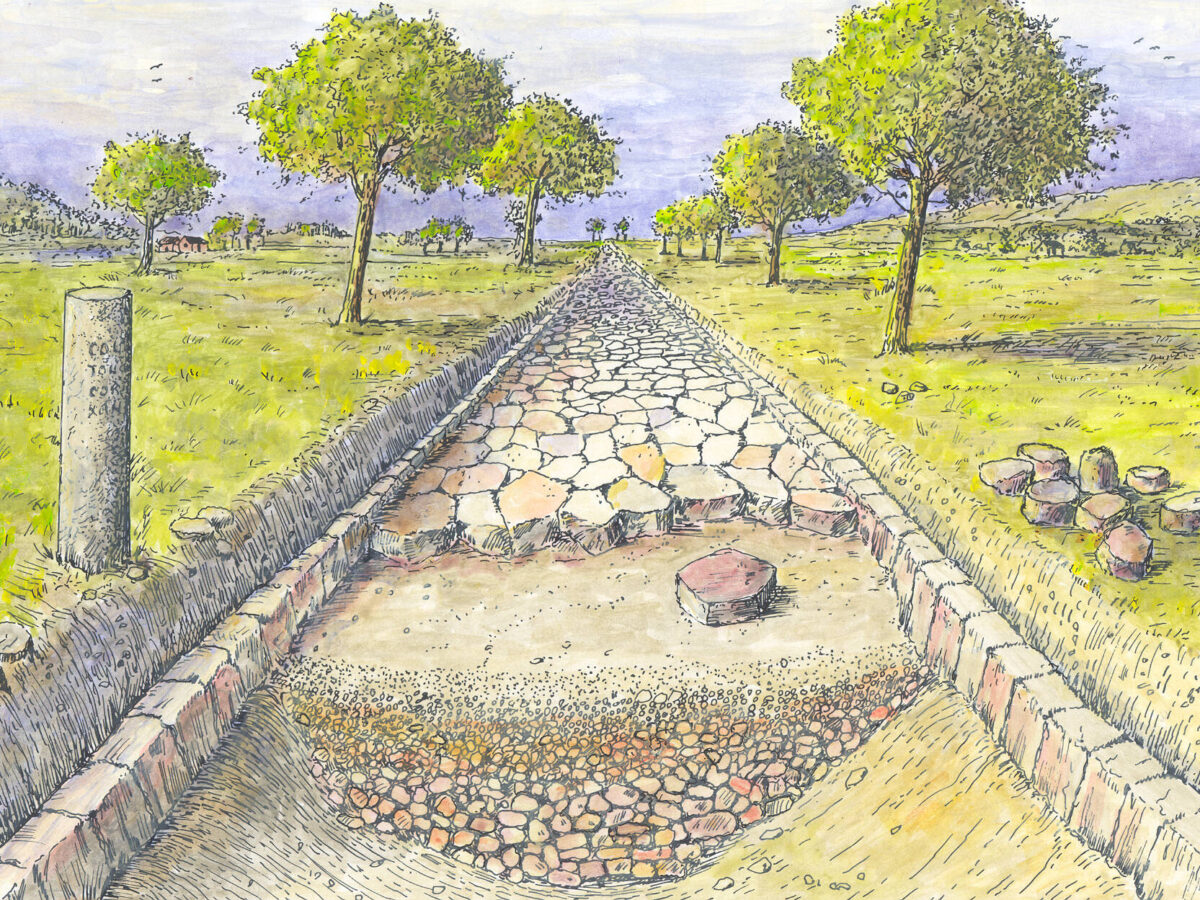Frontinus Supplied Cologne with 20 Million Litres of Eifel Water per Day
Author: Harry Lindelauf
Photography: Wikimedia

The Romans didn’t build their famous aqueducts only in Rome. It may come as a surprise, but along the Via Belgica between Cologne and Tongeren you’ll find aqueducts aplenty: in Cologne, Aachen, Heerlen, Voerendaal and Tongeren. We’ll explain how it all fits together. Today: Cologne.
Frontinus supplied Cologne with 20 million litres of Eifel water per day.
A courier from Rome arrives with a letter from the emperor. He wants an end to the complaints about the lack of water in Cologne. Could you solve it—even if that means building a 95-kilometre aqueduct? And, by the way, please make it quick: an emperor needs friends, not whiners.
Sextus Julius Frontinus is the man in Cologne who receives the letter: commander of the garrison in Colonia Claudia Ara Agrippinensium at the start/end of the Via Belgica. He is also provincial governor and—handily—an engineer.
Rhine water? Not clean enough
Roman Cologne had already built a first aqueduct around 30 CE. The city lay right on the Rhine, but the Romans deemed that water not clean enough. To guarantee safe drinking water, they tapped five springs southwest of the city. Cologne grew so fast, however, that more water was needed. So around 80 CE, Frontinus—our man with the emperor’s letter—set to work on his “challenge”.


The plan, thanks to Sextus’ skills
1. Find sources with abundant, clean drinking water at a higher elevation than the city.
2. Surveying & design: land surveyors and engineers studied the terrain, marked a route with minimal obstacles and an extremely gentle gradient.
3. Phased construction: the entire line was built simultaneously in sections of a little over 4 km.
4. Manpower & materials: Frontinus requisitioned surveyors, engineers and thousands of legionaries in Cologne and Bonn, plus carts, oxen, and materials such as bricks, stone and cement.
5. Service road: a road was built alongside the line for the delivery of workers and materials, and later for maintenance crews.
6. City works in parallel: at the same time, masonry channels and lead pipelines were installed within the city.
Maastricht–’s-Hertogenbosch
The engineers’ search for sufficient spring water ended 95 km from Cologne (roughly the Maastricht–’s-Hertogenbosch distance), in the Urft valley near Nettersheim. There they found Eifel spring water, rich in minerals and especially in lime. The Roman aqueduct started there—at 95.4 km, the longest north of the Alps.
Once completed, 20 million litres of precious clean water flowed to Cologne per day. The challenge was met—astonishingly so, considering the limited tools of the time.

2,500 legionaries, 16 months
German calculations estimate what it took before Frontinus could report back to the emperor: for each metre of aqueduct, the Romans moved 3–4 m³ of soil, built 1.5 m³ of wall, and applied more than 2 m² of plaster. About 2,500 legionaries worked 16 months on the project—excluding the exceptionally precise surveying. The gradient was 1 m per 1,000 m (0.1%), allowing the water channel to reach Cologne 10 m above ground level—80 m lower than the springs at Nettersheim.
What did the aqueduct look like?
Forget the classic image of towering arches like the Pont du Gard. The Cologne aqueduct was a masonry channel about 70 cm wide and 100 cm high. Most of it lay up to 1 m underground (frost-proof). The watertight concrete channel rested on a stone foundation and was covered by a vaulted roof of masonry to prevent contamination. Manholes allowed maintenance, and settling basins at intervals helped deliver the cleanest possible water to the city.

Top-tier building materials
The aqueduct was possible thanks to the Roman invention we now call concrete: slaked or quicklime mixed with sand, small stones or crushed roof tiles, volcanic ash and water. It was poured into formwork; the imprint of boards is still visible today.
In the Eifel, larger and smaller bridge structures (in concrete and masonry) spanned valleys. The largest was the Swist valley bridge between Rheinbach and Lüftelberg: 1,400 m long with nearly 300 arches. Near Euskirchen there was a 500 m bridge, plus several smaller works.
From concrete and stone to lead
In the city, the aqueduct ended in a distribution reservoir at height, so gravity fed the network. The Romans used lead pipes and bronze taps within the city. The Eifel water was so lime-rich that mineral deposits inside the pipes helped protect drinkers from the toxicity of lead. The calcified deposits formed inside the aqueduct were even reused as a kind of “aqueduct marble” to make items such as columns.

